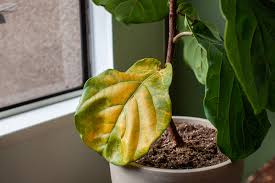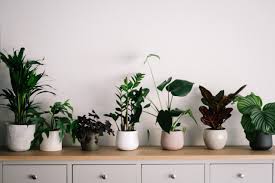Indoor plants are a wonderful way to bring life and color into your home, creating a soothing and refreshing environment. However, keeping indoor plants healthy can be challenging, especially when they are susceptible to various diseases. Understanding how to prevent and treat common plant diseases is crucial for maintaining the beauty and vitality of your indoor garden. In this comprehensive guide, we’ll explore the most common indoor plant diseases, how to prevent them, and effective treatment methods.
1. Understanding Common Indoor Plant Diseases

Indoor plants can be affected by a range of diseases, including fungal, bacterial, and viral infections. Each type of disease presents different symptoms and requires specific treatment approaches.
1.1. Fungal Diseases
Fungal infections are among the most common problems indoor plants face. They thrive in humid conditions and can quickly spread if not controlled.
Common Fungal Diseases:
- Powdery Mildew: Appears as a white, powdery substance on leaves and stems. It thrives in warm, dry environments.
- Downy Mildew: Causes yellow or white patches on the underside of leaves and can lead to leaf drop.
- Root Rot: Results from overwatering and poor drainage, causing roots to become mushy and discolored.
1.2. Bacterial Diseases
Bacterial infections are less common than fungal diseases but can still cause significant damage to indoor plants.
Common Bacterial Diseases:
- Bacterial Blight: Causes dark, water-soaked spots on leaves, which can eventually turn brown and dry out.
- Bacterial Wilt: Leads to wilting and yellowing of leaves due to bacterial invasion in the plant’s vascular system.
1.3. Viral Diseases
Viral infections are often challenging to manage and can cause a range of symptoms, including stunted growth and discolored leaves.
Common Viral Diseases:
- Viral Mosaic: Results in mottled or mosaic-like patterns on leaves, stunted growth, and reduced yield.
- Leaf Curl Virus: Causes leaves to curl, distort, and develop unusual colors.
2. Preventing Indoor Plant Diseases
Preventing plant diseases is often more effective than treating them. By implementing proper care practices, you can reduce the risk of infections and keep your plants healthy.
2.1. Proper Watering Practices
Overwatering is a common cause of many plant diseases, including root rot and fungal infections. Ensure you follow these guidelines to prevent overwatering:
- Use Well-Draining Soil: Choose a potting mix that allows excess water to drain away quickly.
- Water Only When Necessary: Check the soil moisture before watering. Most indoor plants prefer to dry out slightly between waterings.
- Avoid Watering Leaves: Water plants at the base rather than spraying water on the leaves to reduce the risk of fungal diseases.
2.2. Adequate Air Circulation
Good air circulation helps prevent fungal infections and promotes overall plant health.
- Spacing: Avoid overcrowding plants to allow for proper airflow.
- Ventilation: Ensure that rooms where plants are kept are well-ventilated. Consider using a fan to improve air circulation.
2.3. Clean and Sterilize Tools
Dirty or contaminated tools can spread diseases from one plant to another.
- Sterilize Tools: Regularly clean and disinfect gardening tools, pots, and trays.
- Use Clean Water: Ensure that any water used for irrigation is clean and free of contaminants.
2.4. Monitor Plant Health
Regularly inspecting your plants can help you catch potential problems early.
- Check for Symptoms: Look for signs of disease, such as discolored or spotted leaves, wilting, and unusual growth patterns.
- Remove Affected Parts: Prune away diseased or damaged leaves and stems to prevent the spread of infections.
3. Treating Common Indoor Plant Diseases
If your plants do become infected, prompt action is essential to manage and treat the disease effectively.
3.1. Treating Fungal Diseases
Fungal infections can often be managed with the right treatments and adjustments to care practices.
Treatment Methods:
- Powdery Mildew: Apply a fungicide specifically designed for powdery mildew or use a homemade remedy such as a mixture of water and baking soda. Improve air circulation and reduce humidity to prevent recurrence.
- Downy Mildew: Remove affected leaves and treat the plant with a fungicide. Ensure proper ventilation and avoid overhead watering.
- Root Rot: Repot the plant into fresh, well-draining soil. Trim away affected roots and reduce watering frequency.
3.2. Treating Bacterial Diseases
Bacterial infections require targeted treatments and improved plant care.
Treatment Methods:
- Bacterial Blight: Remove and discard infected leaves. Apply a copper-based bactericide if necessary. Improve plant hygiene and avoid overhead watering.
- Bacterial Wilt: Unfortunately, bacterial wilt is challenging to treat once it has set in. Preventative measures include avoiding injury to plants and ensuring proper watering practices.
3.3. Treating Viral Diseases
Viral infections are often difficult to treat, and the best approach is prevention.
Treatment Methods:
- Viral Mosaic: Remove and destroy infected plants to prevent the spread of the virus. Maintain plant health through proper care practices.
- Leaf Curl Virus: Remove and destroy affected plants. Ensure that new plants are disease-free and avoid introducing pests that can spread the virus.
4. Tips for Maintaining Healthy Indoor Plants

Maintaining healthy indoor plants involves more than just preventing and treating diseases. Here are some additional tips to keep your plants thriving:
- Choose Disease-Resistant Varieties: Some plant varieties are naturally more resistant to certain diseases. Select these varieties for a better chance of maintaining plant health.
- Provide Proper Lighting: Ensure your plants receive the right amount of light for their specific needs. Too much or too little light can stress plants and make them more susceptible to diseases.
- Fertilize Wisely: Use balanced fertilizers to provide essential nutrients. Over-fertilizing can lead to nutrient imbalances and increased susceptibility to diseases.
- Repot When Needed: Repot plants that have outgrown their containers or show signs of poor health. Fresh soil and a larger pot can improve plant vitality.
5. Conclusion
Indoor plant care involves a combination of preventive measures and timely treatments to ensure the health and longevity of your plants. By understanding common indoor plant diseases and implementing best practices for prevention and treatment, you can create a thriving indoor garden that adds beauty and tranquility to your home. Regular monitoring, proper care, and prompt action are key to keeping your indoor plants healthy and vibrant throughout the year. With the right approach, you can enjoy the many benefits of indoor gardening without the stress of dealing with persistent plant diseases.



